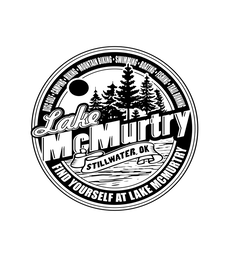Deer Survey
|
Volunteers from the OSU student chapter of The Wildlife Society completed browse surveys on Lake McMurtry in early March 2012.
|
A total of 15 random points scattered across the property were established and at each point, all woody plants within a 5-m radius and < 1.5 m of height were surveyed. Each woody plant tip within this sphere was characterized as either browsed or unbrowsed. Plots with livestock present were excluded from the survey and potential rabbit herbivory (negligible) was identified.
Woody plant species detected included Buckbrush (Symphoricarpos orbiculatus), Eastern Redcedar (Juniperus virginiana), Chittamwood (Sideroxylon lanuginosum), Oak (Quercus spp.), Osage Orange (Maclura pomifera), Redbud (Cercis canadensis) Sand Plum (Prunus angustifolia), Sumac (Rhus spp.), Rough-Leaved Dogwood (Cornus drummondii), Elm (Ulmus spp.), Grape (Vitus sp.) Greenbriar, (Smilax spp.), and Sugar Berry (Celtis laevigata).
Species (or genera) were classified as either first choice forage (Dogwood, Elm, Greenbriar, and Sugar Berry), second (Redbud), or third (Buckbrush, Redcedar, Chittamwood, and Oak) based on known deer preferences in Oklahoma. Sand Plum, Sumac, and Grape were excluded due to low occurrence in sample points.
Analysis revealed that approximately 4% of the third choice plants were utilized which could indicate a low to moderate deer density. 38% of the first choice plants were utilized which could indicate a low deer density. Second choice plants are generally considered the most informative indicator as to deer density. However, a limited sample of second choice plants occurred in the sampled plots, with only Redbud occurring frequently enough (at least 20% of the points) to be considered. While the second choice summary should be cautiously viewed., approximately 24% of the second choice forage was utilized indicating a low to moderate deer density.
In summary, from the samples collected during late winter 2012, it appears that the deer density at Lake McMurtry is within the carrying capacity of the winter browse forage base. This data is only one indicator of the overall deer herd health and is best interpreted in combination with fawn:doe ratios and body weight of harvested deer. Long-term trend data of browse surveys combined with camera-trap surveys are recommended to assess changes in deer density, sex ratios, fawn:doe ratios, and forage utilization across time. Further, dressed body weights of harvested deer should be collected if feasible.
At present, a drastic deer culling does not appear warranted; however, there is no reason to believe that a conservative buck and doe harvest could not be conducted on this site. Based on the limited data available, it was recommended that an initial starting point of up to 1 doe/100 acres be harvested per year for Lake McMurtry. Buck harvest will depend on the objectives of the site (e.g. desired antler quality of animal harvested) and the yet to be determined buck:doe ratio.
Woody plant species detected included Buckbrush (Symphoricarpos orbiculatus), Eastern Redcedar (Juniperus virginiana), Chittamwood (Sideroxylon lanuginosum), Oak (Quercus spp.), Osage Orange (Maclura pomifera), Redbud (Cercis canadensis) Sand Plum (Prunus angustifolia), Sumac (Rhus spp.), Rough-Leaved Dogwood (Cornus drummondii), Elm (Ulmus spp.), Grape (Vitus sp.) Greenbriar, (Smilax spp.), and Sugar Berry (Celtis laevigata).
Species (or genera) were classified as either first choice forage (Dogwood, Elm, Greenbriar, and Sugar Berry), second (Redbud), or third (Buckbrush, Redcedar, Chittamwood, and Oak) based on known deer preferences in Oklahoma. Sand Plum, Sumac, and Grape were excluded due to low occurrence in sample points.
Analysis revealed that approximately 4% of the third choice plants were utilized which could indicate a low to moderate deer density. 38% of the first choice plants were utilized which could indicate a low deer density. Second choice plants are generally considered the most informative indicator as to deer density. However, a limited sample of second choice plants occurred in the sampled plots, with only Redbud occurring frequently enough (at least 20% of the points) to be considered. While the second choice summary should be cautiously viewed., approximately 24% of the second choice forage was utilized indicating a low to moderate deer density.
In summary, from the samples collected during late winter 2012, it appears that the deer density at Lake McMurtry is within the carrying capacity of the winter browse forage base. This data is only one indicator of the overall deer herd health and is best interpreted in combination with fawn:doe ratios and body weight of harvested deer. Long-term trend data of browse surveys combined with camera-trap surveys are recommended to assess changes in deer density, sex ratios, fawn:doe ratios, and forage utilization across time. Further, dressed body weights of harvested deer should be collected if feasible.
At present, a drastic deer culling does not appear warranted; however, there is no reason to believe that a conservative buck and doe harvest could not be conducted on this site. Based on the limited data available, it was recommended that an initial starting point of up to 1 doe/100 acres be harvested per year for Lake McMurtry. Buck harvest will depend on the objectives of the site (e.g. desired antler quality of animal harvested) and the yet to be determined buck:doe ratio.

